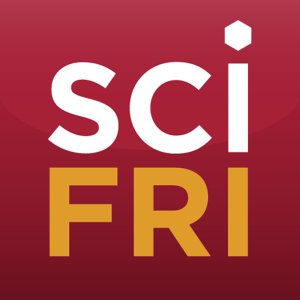
Plastics And Ocean Life, Building An Animal Crossing, Indigenous Restoration. April 22, 2022, Part 2
 2022-04-22
2022-04-22
There’s a spot on Highway 101 in Agoura Hills, it’s pretty inconspicuous. There’s brown and green rolling hills on either side of the highway. Homes are sprinkled here and there. And then a small metal gate that leads off on a hiking trail. You probably wouldn’t know it, but soon this spot will be the location of the world’s largest animal crossing. This crossing will reconnect habitats that have been cut off from each other for three quarters of a century and it’ll do it over a highway that is constantly buzzing with cars — 300,000 pass by this spot every single day. In this piece we’re going on a geography voyage — from the north side of the highway to the south, and up the hills, above the highway, to get the real view.
We’ll start here — there’s a big open space on the northern side of the highway. It’s at the entrance to Liberty Canyon and where I meet Beth Pratt. “You have oak trees, a little creek area here. And we’re listening to, actually, an Anna’s hummingbird giving a little song for us that is actually resonating even over that, that noise of traffic,” Pratt said. She is the California Regional Director for the National Wildlife Federation. “For me what’s kind of remarkable, but also sad. It’s the last sixteen hundred feet of protected space on both sides of the freeway,” said Pratt.
Read the rest on sciencefriday.com.
Life Has Found A Way On The Great Pacific Garbage Patch
The Great Pacific Garbage Patch is a huge collection of trash floating in the North Pacific Ocean. It’s made up mostly of plastic—things like water bottles, shoes, and fishing gear, but also a large amount of microplastics, tiny bits of broken-down plastic that can be invisible to the naked eye.
A giant, swirling patch of trash seems bad. But recent research has revealed a complicating factor: Marine life has colonized the garbage patch, making the floating plastic their new homes. As the classic Jurassic Park quote goes, “Life finds a way.”
Joining Ira to talk about life on the Great Pacific Garbage Patch is Linsey Haram, AAAS fellow at the U.S. Department of Agriculture based in Alexandria, Virginia. Her research on the Garbage Patch was done for the Smithsonian.
Enzymes Are Taking On Our Plastic Problem
Flip over a plastic water bottle, or a takeout container, and it’s very likely you’ll find the number “1” stamped on the bottom. This is the sign of the problematic plastic PET, which is a large source for plastic pollution. It’s estimated that only a third or less of this type of plastic is recycled into something new.
Scientists are getting creative in trying to outsmart plastics that don’t want to be recycled. Some are looking into enzymes that can break down plastic into its more basic molecular building blocks. The idea is that these smaller molecules are easier to turn into new things, making upcycling an easier task.
Joining Ira to talk about the frontier of enzymes as recycling powerhouses is Jennifer DuBois, professor of chemistry at Montana State University in Bozeman, Montana.
Indigenous Knowledge Is Central To Climate Solutions
As the United States observes Earth Day this year, many will be thinking about their personal relationship with—and responsibility to—the planet. But in an era of multiple planetary crises, including extinctions, global warming, and contaminated water, what about the Indigenous peoples whose millennia-old relationship with their land has been disrupted and sometimes severed by colonialism and other displacements?
Indigenous environmental scientist and author Jessica Hernandez talks to Ira about the harms the Western science has perpetuated against colonized people, as white environmentalists created national parks on Indigenous lands and “helicopter scientists” continue to do research in the global south while using the wealth of Western institutions.
And she explains why greater recognition of Indigenous science, and partnerships that center Indigenous peoples and their research questions, is good for the entire planet.
Transcripts for each segment will be available the week after the show airs on sciencefriday.com.
More Episodes
Create your
podcast in
minutes
- Full-featured podcast site
- Unlimited storage and bandwidth
- Comprehensive podcast stats
- Distribute to Apple Podcasts, Spotify, and more
- Make money with your podcast
It is Free
- Privacy Policy
- Cookie Policy
- Terms of Use
- Consent Preferences
- Copyright © 2015-2024 Podbean.com




